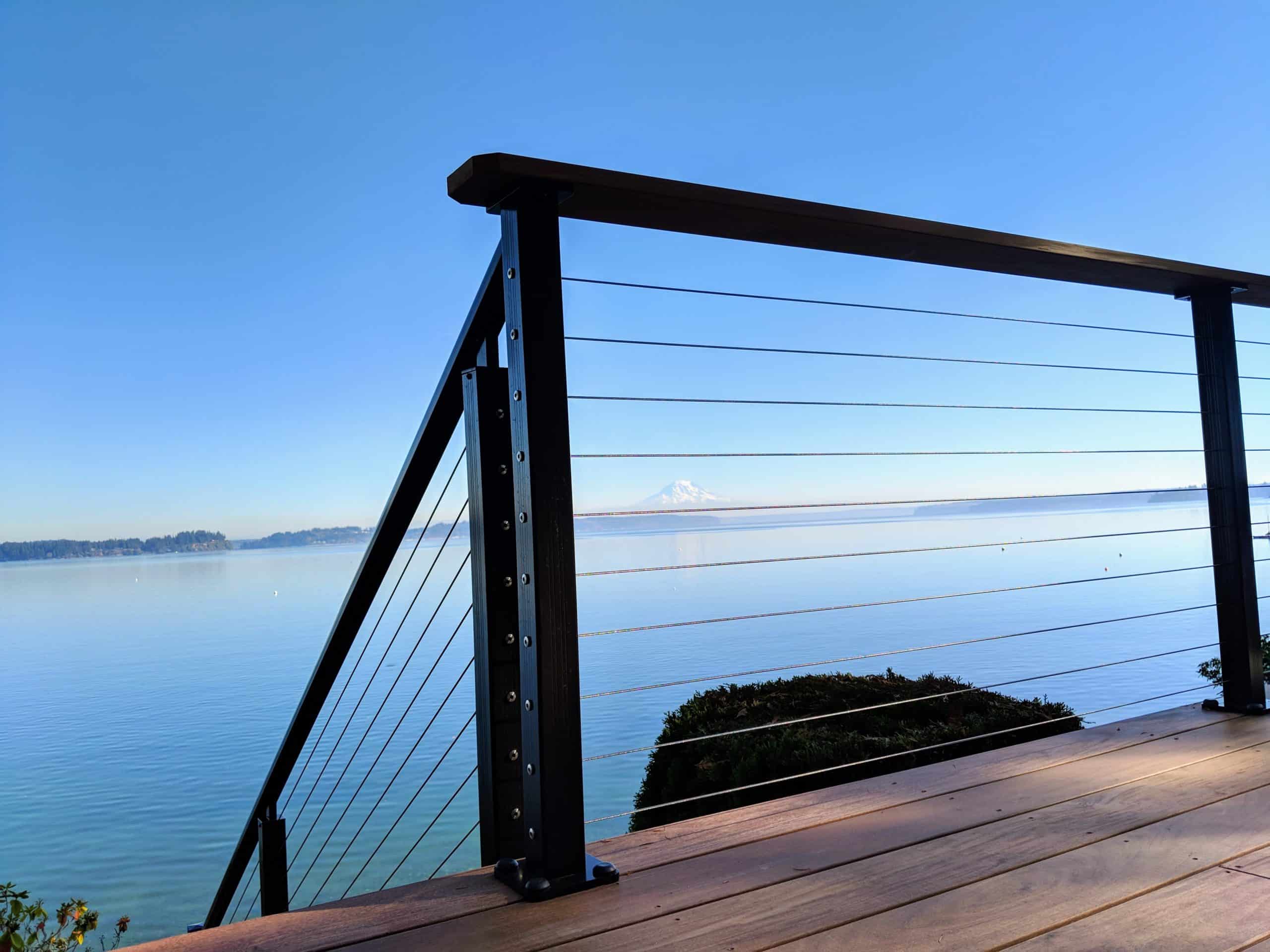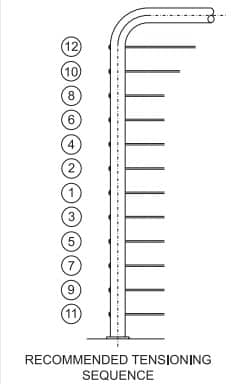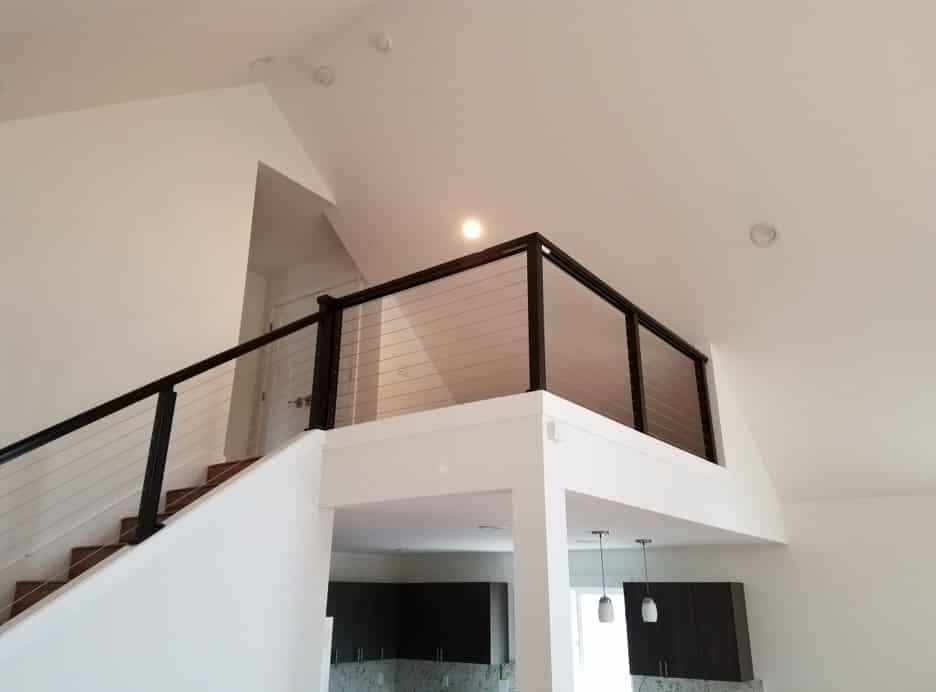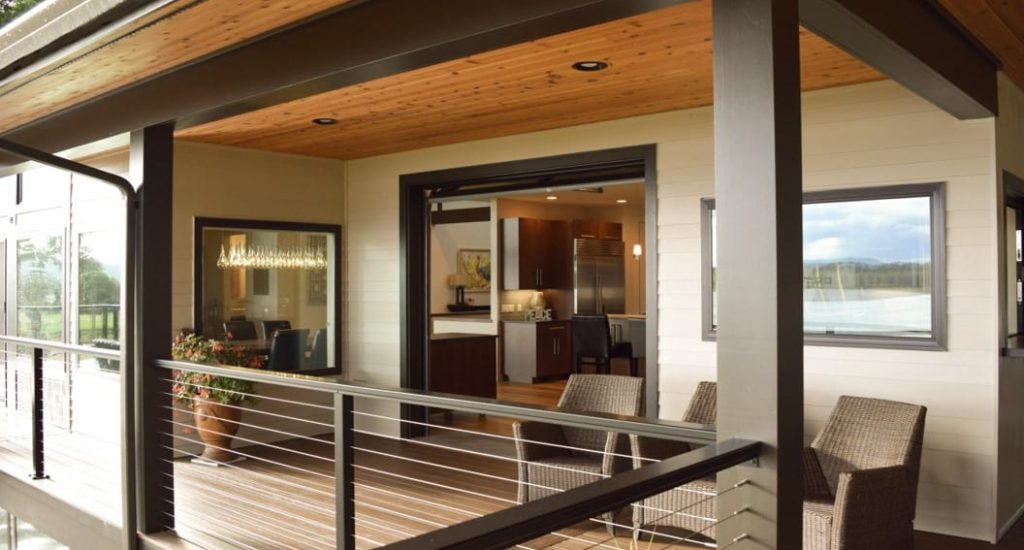Cable railing is a nice contemporary option for both indoor and outdoor spaces. They’re low maintenance, durable and offer limited visual distraction. They ensure that homeowners can enjoy a clear view from their outdoor living space or make a room feel larger. Pickets or other visual hindrance options are used for staircases, instead of using rods.
Like all railings, cable railing systems perform a critical safety function. They must meet rigorous international, national and state building codes. Homeowners can rest assured that they and their visitors are safe when cable railings are installed in accordance with these standards.
One key factors in properly installing a new cable railing system is spacing. The cables are installed with high tension in order to avoid sagging and stretching. In a cable railing system, contractors are typically referring to:
- Cable spacing
- Post spacing
Proper Cable Spacing

Whether cables are installed vertically or horizontally, the spacing between them is defined by “sphere rules.” Fittings and cable in runs must be spaced and tightened so a four-inch sphere can’t pass between the open area between each cable.
Since properly installed railings may have some deflection, codes and best practices typically recommend runs be installed with 3 ⅛” spaces between them. To simplify, many contractors will estimate the number of cable runs using the following equation:
Number of runs = (Height in inches from floor to the bottom of the top rail ÷ 3) – 1
Subtracting one in this calculation means the railing system will not have a cable run along the floor or deck surface. Using this calculation, the runs will meet the maximum sphere rule requirements.

The exception to the four-inch sphere rule is cable railings used for staircases. Here, the lowest cable railing can be six inches from the ninety-degree corner at the back of an individual step. However, the cable still needs to be four inches from the front edge of the step.
After all the cables have been installed, tension the cable to a minimum of 225 lbs with an open-end wrench. Hold the cable with cable grip locking pliers to prevent it from rotating. Make sure you tension all cables in sequence. Begin with the center cables, moving up and down toward the top and bottom.
Proper Post Spacing

The other important component of cable railing installation is the spacing between posts. Wood, steel, aluminum or composite posts can be used in a cable railing system. They must be securely mounted to ensure they won’t bend when the pressure of over 200 lbs is applied by the high-tension of cables.
Every type of post material (wood, aluminum, composite or steel) has its own suggested thickness. This is true for both intermediate and corner posts. The greatest tension will be on end and corner posts.
Unless you are using additional support, the spacing between most posts should not be more than four feet apart. This ensures the cables still meet the 4” sphere rules. However, RailFX’s posts and cables are rated to be five feet apart, letting you use less intermediate posts in your design.
If a design calls for wider post spacing, there are two ways to accommodate this. To account for deflection, for every foot over three to four feet (depending on the manufacturer) between posts, cables must be moved ¼” closer. Using this calculation, posts five feet apart need cable runs with no more than 2 ⅞” of spacing between them.
Alternatively, cable railing posts can be spaced farther apart if they are reinforced with post stiffeners. RailFX cable railings are approved in 35 states to be spaced five feet apart with these stiffeners.
Build the Perfecting Railing
Together, the right combination of cable runs, posts and top rails can create an attractive and safe railing system. They are a perfect finishing touch on a deck or staircase. Properly installed cable railings keep homeowners safe while letting them enjoy their view to its fullest potential.
For more information on RailFX cable railing systems, visit the RailFX website.

